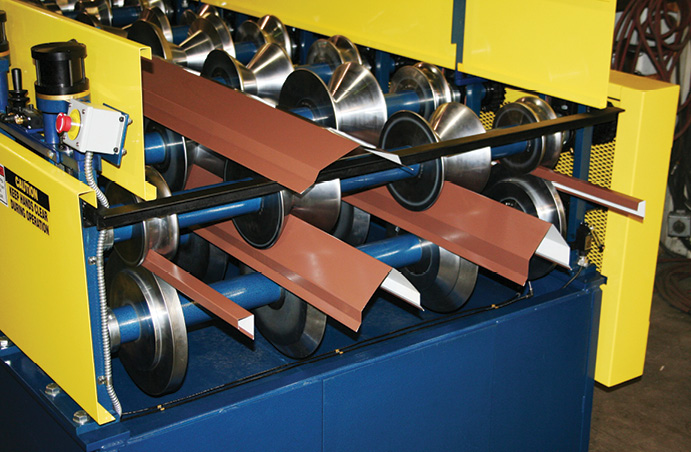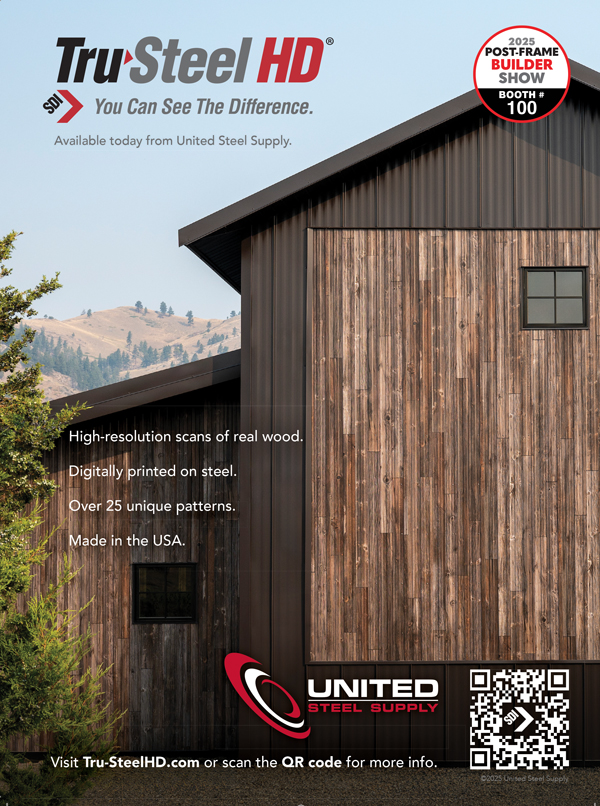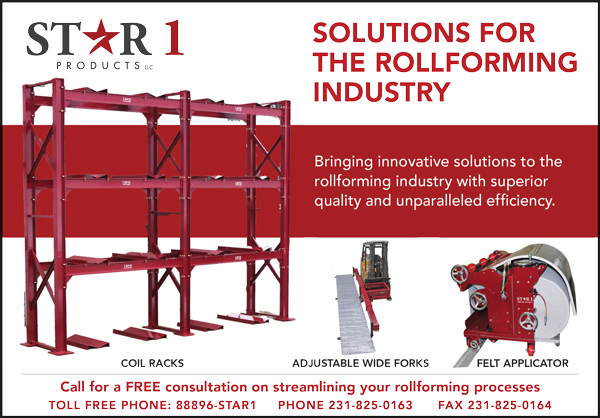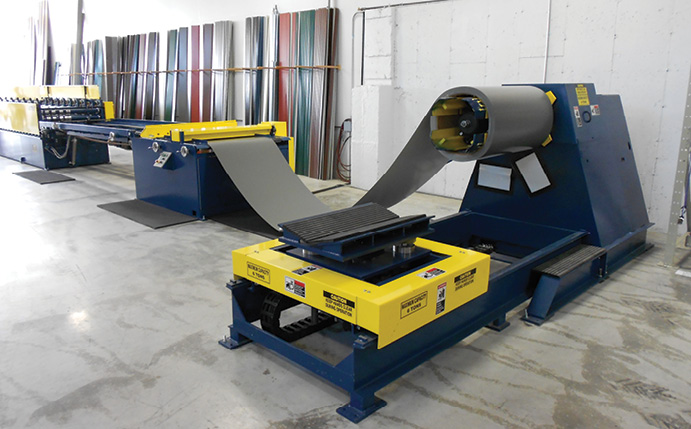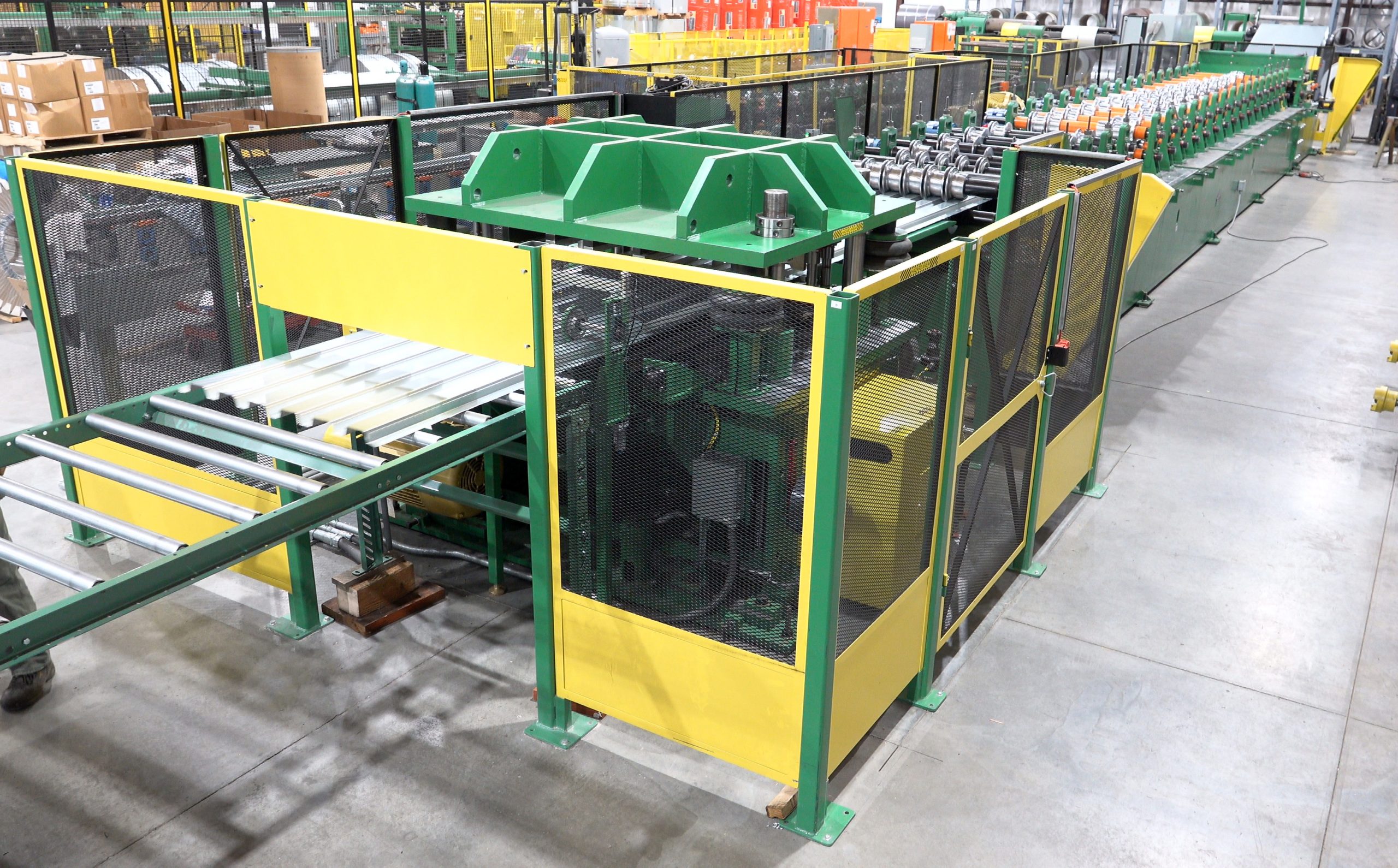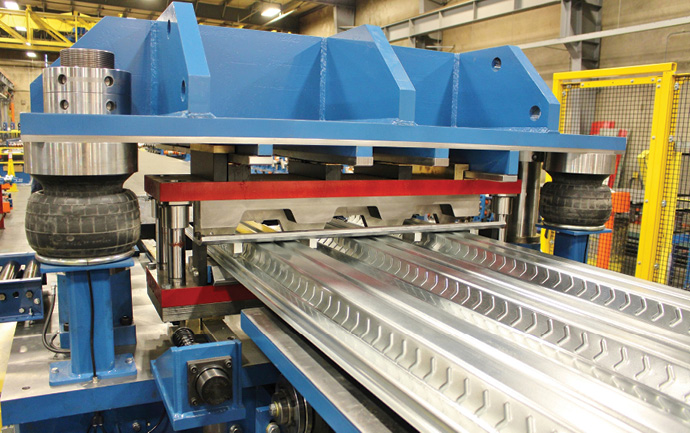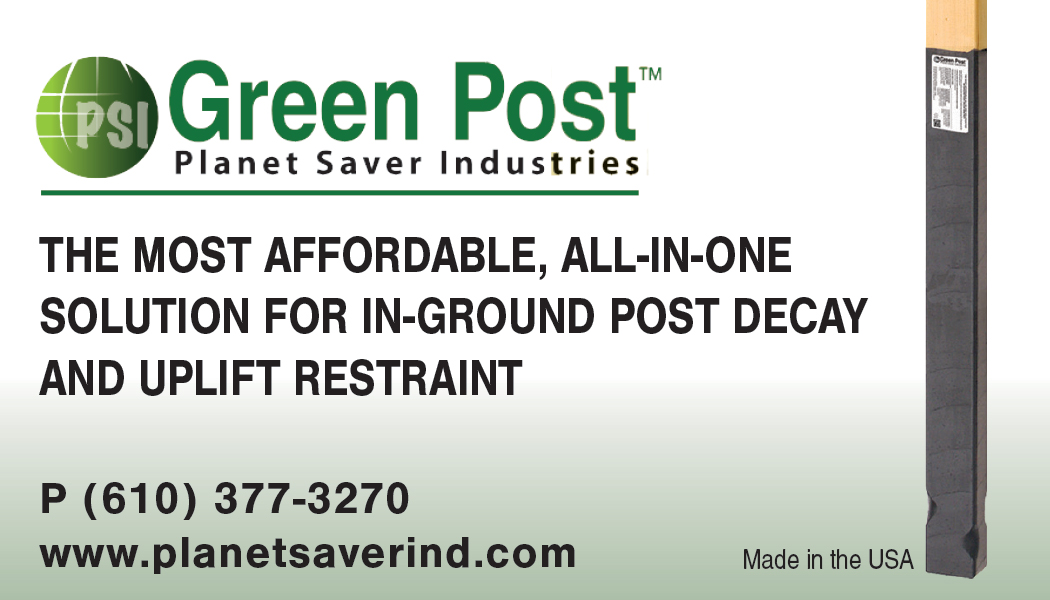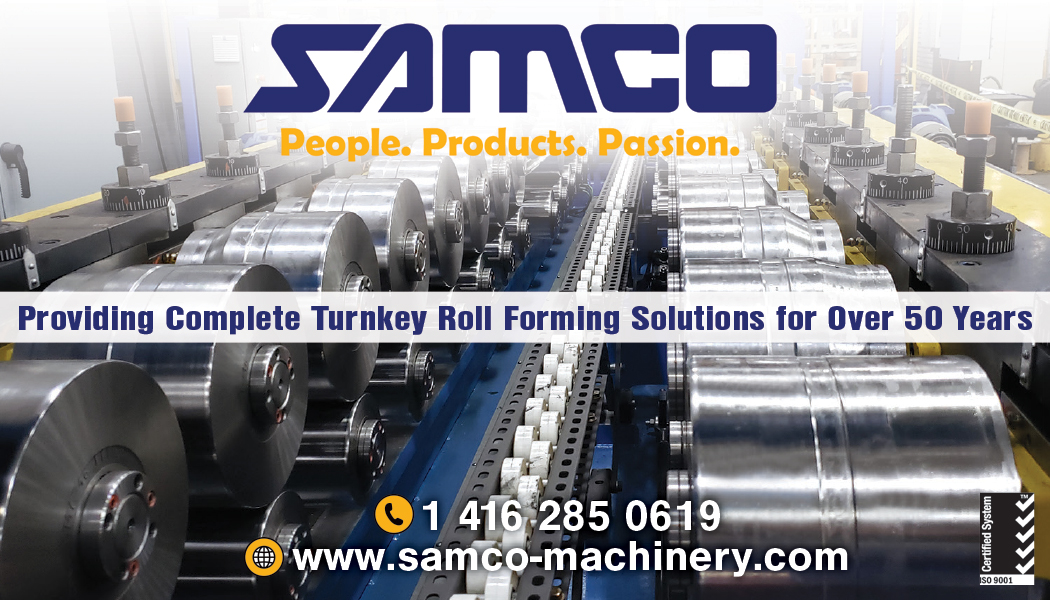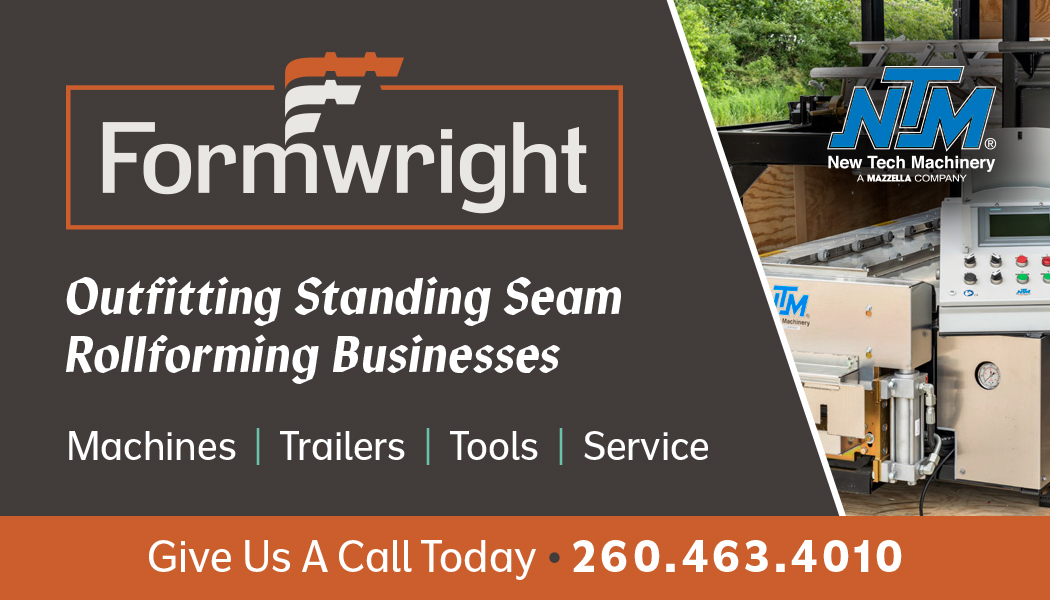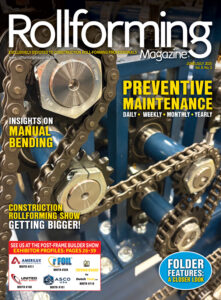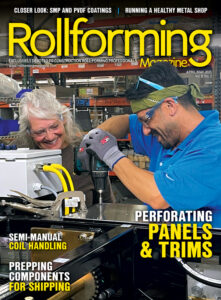What To Consider Before You Take That Next Step In Expansion
When the economy is good, it may be tempting to invest in new income streams, equipment automation, panel profiles or features. It may not be a bad idea, but with roll-forming equipment starting in the low $100,000 range and progressing upwards, there are things you should consider before taking that next step.
Are you ready?
Like most companies, Metal Rollforming Systems started out very small. It was 27 years ago when the company was founded by Dan McDonald. It continues to operate as a family-owned and operated business with both Dan’s son-in-law, Bill Griffin, and son, Aaron McDonald, taking over the day-to-day operations.
Dan built his first machine with the intent of selling metal roofing and siding. Then he decided to sell the machine.
“At that time there were only a couple of companies manufacturing [metal panel machines] and the price point was really high,” Griffin explained. “We kind of developed the Henry Ford production-line version.”
Today, their customers range from small family-run roll-forming shops to large national companies.
Griffin said his job isn’t just to sell machines, but to help buyers determine what machine is best — if at all — for their particular situation.
“My job is more as a consultant than sales,” he said. “Oftentimes, it’s not the right fit yet [for the customer]. Sometimes you talk to someone and three years later they’re where they need to be to make it.”
The questions he challenges potential buyers to ask themselves revolves around their anticipated market: “What types of volumes are you anticipating? What type of profile-needs do you have in your market; is a single profile going to be sufficient or do you need to offer multiple profiles? How do you buy material, how do you buy coil, and where and what price are you getting it for?”
If you are already in the roll-forming business, you should already know the answers. But what if you are a metal roofer looking to buy a stationary roll-forming machine for the first time? First, does your business have the volume to justify such a cost? If not, do you intend to add roll forming as a service to others?
“The challenge with buying one of these machines — if you’re going to be buying one just for yourself — you’re going to have a lot of down time because you won’t be able to capitalize on the full capacity of the machine,” Griffin noted. He added that, typically, roofers will branch out to begin serving more than themselves. That, however, can pose its own challenge. “As a roofer, you don’t typically go out and buy from your competition, so if Joe has a roll-forming machine, and he’s also your competition for roofing, you’re going to go give Bob [the dedicated roll-former business owner] your business, not Joe. So, typically, if they started as a roofer, they will quickly get out of the roofing game so they can better service and provide to more roll-forming customers.”
For newcomers hoping to start a roll-forming business, the decisions you will need to make include deciding on the profiles you plan to offer. In most cases, Griffin said, a business will start by offering one or two panel profiles. MRS alone has “well over 30” panel profile options to choose from.
Another decision to make is machine capacity. MRS offers three different lines (Patriot, Signature, and Titan), that run at three different speeds: “So you want to find the right fit,” Griffin said. “If the volumes aren’t there for the high-end lines, you’ll look at the lower-cost machines, but if there are high-production needs, you’ll need a machine that can handle those.”
One thing all MRS lines adhere to is the high-quality product that is produced. Each of the three series produce the same quality of finished product.
How you determine potential volume isn’t always simple. “There’s no source for that,” Griffin said. “You have to have a feel for the industry. Most of these guys getting into roll forming have some sort of tie to it — they’re either builders, they’re in the construction industry, or they know someone who is a roll former, and that’s what gets them interested in roll forming, that’s where the spark starts.”
Buyer Beware
When considering the purchase of a major piece of equipment, you don’t want to throw good money after bad. Griffin cautions that there are substandard roll formers on the market, typically imported from overseas. “When you’re looking at investment, you look at a building, employees, inventory, and your marketing, and pretty soon the cost of the equipment is a smaller piece of the pie than you might think,” he said. “So if you have a substandard piece of equipment, that is not producing a quality panel to sell to people, you have all these other costs that you’re not able to cover because you’re not able to sell the volumes you need. Sticking with a quality piece of equipment — not going too cheap — is important.”
Also beware of inferior coil. “It doesn’t hurt the machine, but the quality of the material has a direct affect on what the machine will produce,” Griffin said. “If you get low quality with substandard material, you might have paint issues, coverage issues, any number of issues that the machine is not able to compensate for.”
Fortunately, coil is typically not an issue. “Most of the stuff is pretty good,” he said, adding, “It’s the guys trying to squeak by, buying seconds — low-quality material that’s rejected at the mills.” “Stick with a reputable vendor and you’ll have no issues.”
A Solid Business Plan
Bottom line, develop a solid business plan before you purchase a new machine. Griffin said this involves: “Looking at what your expenses are going to be, taking into consideration payments on the equipment, the price of raw materials, then looking at what your sales are going to be, and what you stand to profit. If you take the time to do that, most of the time it pencils out.”
Traditionally, Griffin said, the first three years of being a roll former are years of growth. “You’re typically looking at a 50-100 percent increase year-over-year as you get established,” he said, adding: “That’s going to vary geographically; there are some areas where it’s going to be very difficult to break into, but for your typical guy, that would be expected.”
Success has come to many, and that also brings a warning from Griffin. “When you start this business, when you start down this route, here’s what’s going to happen: you’re going to start selling and you’re going to have these checks coming in. I warn people, don’t go spend it. You have to replace your inventory. People lose sight of their replacement cost of inventory and they get themselves into hot water.”
Another part of your business plan should be good customer service. “A lot of our customers have built their business on same-day or next-day service,” Griffin said. And it is really at the heart of the regional construction roll-forming industry boom. “When you get into competition with some of the manufacturers, you might need to wait 3, 4, 5 days sometimes to get your order. Most people want it and need it now. Builders want to get their crew onto the next job. If they need a sheet or some trim, they want to be able to go get it now and get on to the next job.” RF
- If you’re investing in a quality machine, it’s a waste of money to use it with inferior coil. MRS photo


